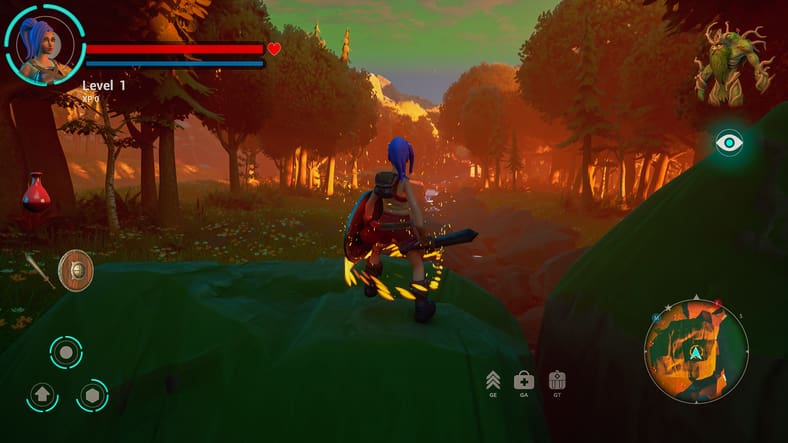You’ve just sat down. VR Headset on. What now? This article aims to get you inside the head of your consumer. As a gaming brand, it can be tough to keep up with the constantly changing landscape of what the video gaming industry is doing. What do gamers want from brands? How can non-gamers become avid gamers, now and in the future? What is the future of video gaming? Mintel answers these questions.
In this article, we discuss the market value of the global gaming industry, consumer participation with emerging technologies in gaming such as VR (Virtual Reality), AR (Augmented Reality), and AI (Artificial Intelligence), and expected gamer activity over the next few years.
Video Gaming Industry Growth Trajectory
Is the gaming industry growing? The future of the global video gaming industry appears to be on a trajectory of growth. While there were hopes to cross the $200 billion revenue threshold in 2023, Mintel estimates that 2024 is more likely. This follows a period of rapid expansion during the 2020-21 COVID-19 pandemic, which could not be sustained due to supply chain issues, chip shortages, and global economic uncertainties, leading to a decline in revenue in 2022.
While global financial instability puts the future of the video gaming industry at risk, advancements in technology may prove to aid growth in the long term. This competitive environment seems set to encourage innovation. Consumers are also generally positive about the progress offered by technology, further indicating this growth potential.
Consumer Participation With AR and VR
Emerging gaming technologies AR (Augmented Reality) and VR (Virtual Reality) are appealing to gamers, who tend to be at the cutting edge of technological advancements.
With VR technology evolving around games, an assumption might be that gamers are at the forefront of this technology in participation. This appears correct. Consumers show interest in VR for gaming above all other uses, but that’s not all. Active VR gamers show more interest in other emerging gaming technologies such as AR (54%) and AI-integrated gaming (47%) when compared to other segments (mobile gamers, console gamers). VR, then, is not only a way to test new styles of games, but the viability of new consumer-facing technology.

With such potential around VR, it’s important to consider the barriers to adoption. Notably, consumers state the high price of devices and not using the product enough before purchase as key barriers to VR adoption. This makes firsthand experiences with VR devices crucial to converting interest into purchases. Despite gaming arcades declining as home consoles have evolved, these barriers to adoption could prove to be a real opportunity for arcades to return, providing consumers with that critical need for the firsthand experience.
AR, on the other hand, offers a blend of immersive digital and real-life experiences, resonating with consumers who enjoy activities that offer a break from technology. AR gaming can provide real social value in spending time with family and friends—a leading reason to partake in leisure activities—as consumers can participate in real-world interactions while gaming. There is an opportunity here to capitalise on the consumer need for social interaction.
Our UK Mobile Gaming Market Report found that over a quarter of mobile gamers actively seek games that use AR technology, and this interest peaks among male users aged 16-34. Going a step further, Mintel statistics show that over half of those playing action games are seeking out mobile games that use AR. Brands could use AR to tap into consumers’ need for adventure by building games that can incorporate adventure using real-world environments.
What Is the Future of Gaming with AI?
Game developers are exploring ways to integrate AI into their workflows, recognising the need for human oversight to ensure quality and manage AI’s limitations. In the UK, gamers appreciate AI innovations that enhance gameplay, such as personalised worlds and character responses, which can increase player engagement and revenue potential for brands.
AI in video gaming is undergoing significant advancements that are transforming how games are developed and experienced. Non-player characters (NPCs) are becoming more lifelike with the help of AI, making them capable of remembering past interactions with the player, displaying a range of emotions, and even having ambitions. With almost a third of gamers wanting “smart enemies that evolve throughout the game”, brands have the potential to appeal to real consumer demand here.
With advancements in AI making way for new ways to play video games, brands must be mindful of how these changes are perceived by consumers. Beyond the potential for glitches that disrupt gameplay, consumers are aware of the legal and moral implications of implementing AI in video games, such as who owns AI-generated content like environments created with AI. Over half of consumers are “somewhat” or “very concerned” over the prominence of AI, indicating a need for tact when considering the use of such technology.
Overall, AI is poised to revolutionise the gaming industry by enhancing the player experience through more immersive and personalised gameplay, while also presenting new challenges and opportunities for game developers and businesses.
Current and Expected Gamer Activity
Mintel data forecasts that gamers’ engagement with video games is expected to increase over the next few years. Specifically, 30% of gamers in the United States anticipated playing more video games in 2023 than they did in the previous year, indicating a growth in gaming time that surpasses even the heightened engagement during the pandemic lockdown period. Game type is also having an impact on expected gaming activity in the coming years.
A trend of gamers turning to relaxing and free-to-play games indicates a shift towards more cost-effective gaming experiences, possibly due to tighter economic conditions. Additionally, open world games are in high demand, with three in 10 gamers expressing excitement for upcoming titles in this genre. However, gamers are becoming more selective with their purchases, and high-quality gaming experiences are still a priority, even if some are pulling back on spending.

In terms of future gaming activity, it’s likely that gamers who have recently acquired new hardware will be looking for new games to play on these. There’s an opportunity for gaming companies to meet this demand with quality software. However, premium software sales alone may not be sufficient for some businesses to thrive. Gaming subscription services might help buffer the annual software release schedule, keeping consumers engaged throughout the year, and keeping a more predictable income for businesses. As 84% of consumers show satisfaction towards their gaming subscription service, there is potential for brands to appeal.
How Can Video Gaming Brands React?
The evolving video gaming industry is just that: evolving. To keep pace with demanding consumers, brands need to consider their preferences around technological advancements when looking into the future of video gaming. As AR, VR, and AI pave the way for new gaming experiences, these technologies also set new expectations from consumers towards brands and industry players. With the video gaming industry only set to grow, it’s now or never for brands to acknowledge and respond to what consumers want and why.
Browse our gaming market research and level up your business strategy by identifying the latest trends in consumer behaviour and market data across the industry. Sign up for Spotlight, our free newsletter for exclusive insights, by hitting the button below.







































